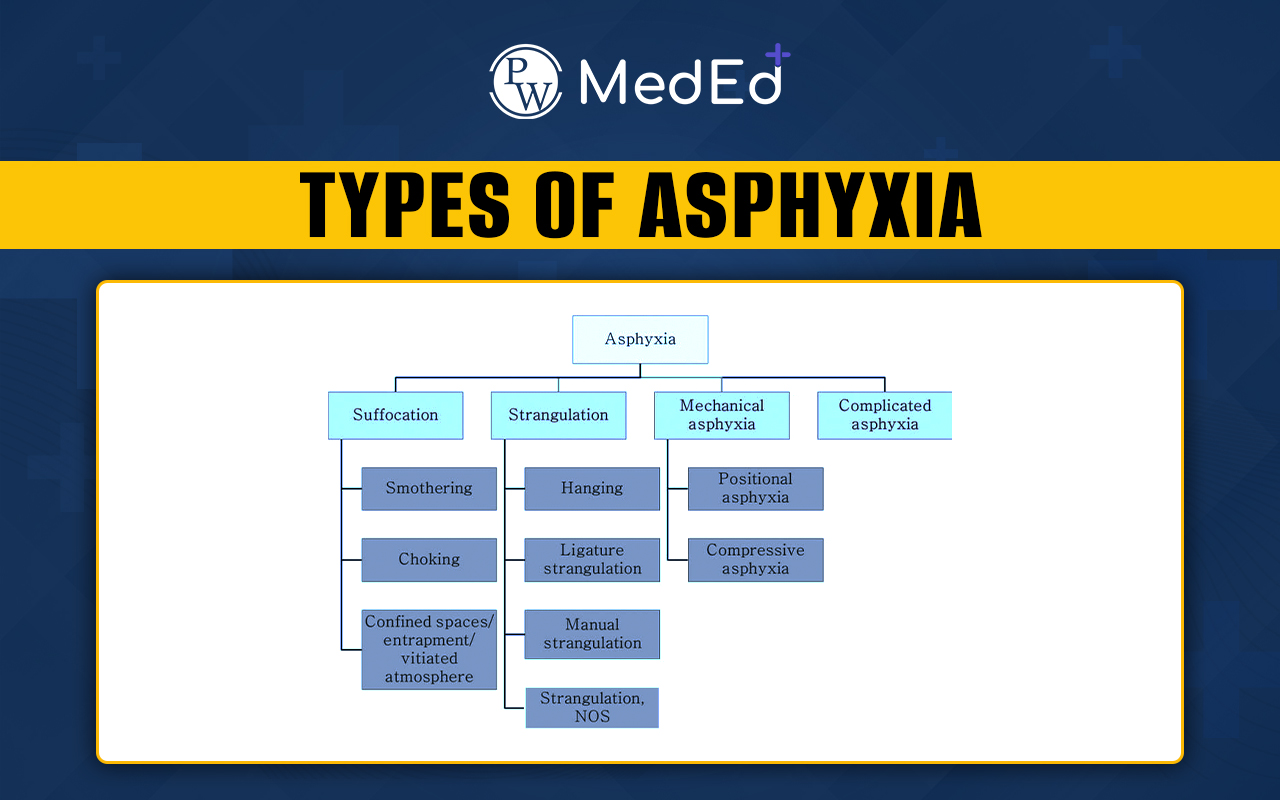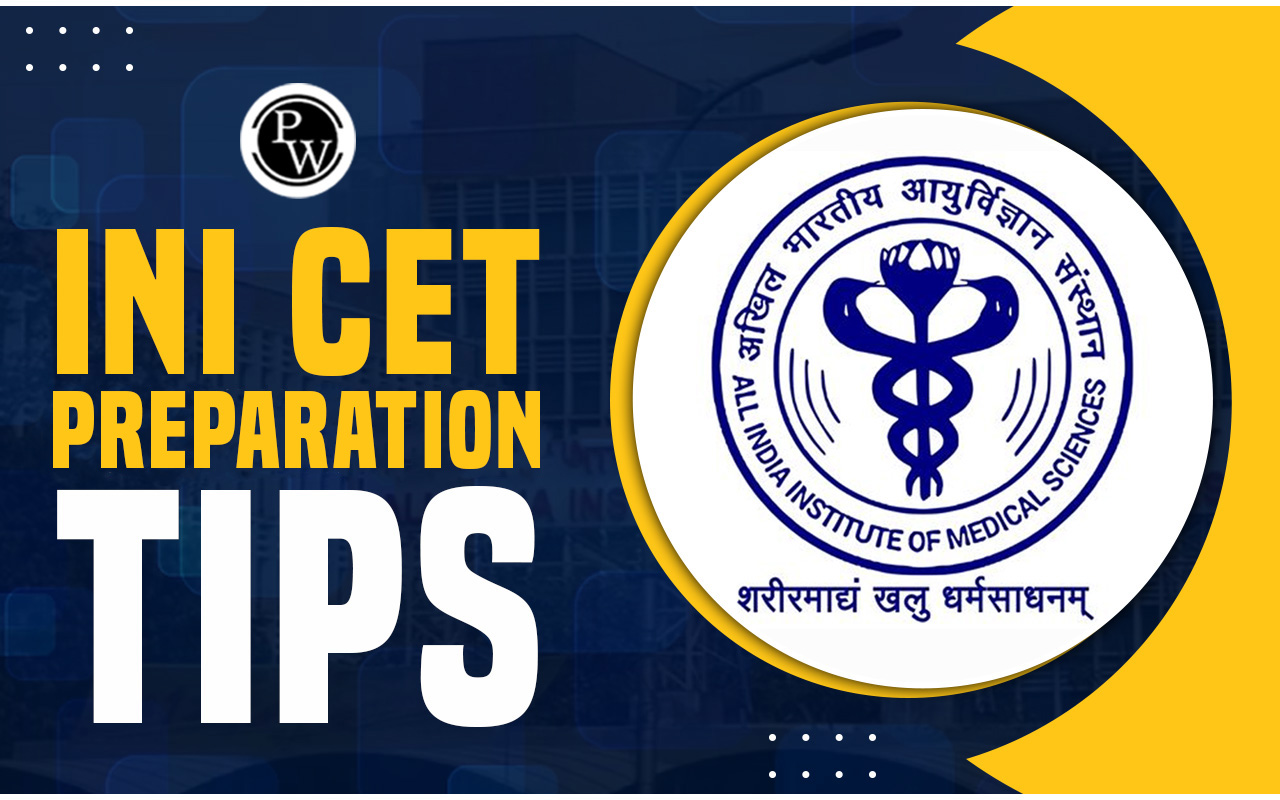

Types of Asphyxia: Suffocation or being unable to breathe. Asphyxia is a condition caused by insufficient oxygen supply to the body, which can lead to unconsciousness or death. It results from interference with the breathing process, leading to hypoxia (low oxygen) and hypercapnia (excess carbon dioxide).
Visit - MedEd App
Read More - Pharyngeal Arches
Asphyxia vs. Hypoxia:
Hypoxia is when we have low levels of oxygen in your blood or low oxygen delivery to your tissues. It can range from mild to serious. Some of your body’s tissues can function for a long time with low levels of oxygen, while others get damaged quickly.Types of asphyxia:
Asphyxia can occur in several forms depending on the cause of the oxygen deprivation.Mechanical asphyxia:
Physical or mechanical asphyxia happens when a force or object keeps you from breathing.Traumatic asphyxia:
A type of physical asphyxia, traumatic asphyxia is similar to compression asphyxia, but it tends to happen quickly and with strong force. Examples include car accidents, or when a large object, such as a piece of furniture, falls on your chest or stomach. Traumatic asphyxia causes the blood in your heart to rush backward in your veins toward your neck and brain.Birth asphyxia:
Sometimes, an unborn child gets too little oxygen during pregnancy. This might happen, for example, because of a lack of oxygen in the mother's blood, or problems with the placenta. During delivery, the baby may get less oxygen because of umbilical cord problems or a long labor.Positional asphyxia:
If the position of your body obstructs your breathing that’s called positional asphyxiation. The most common reason this happens is if someone isn’t strong enough to move when their breathing is blocked. An example is an infant who can’t lift their head when their position is keeping air from getting to their lungs.Visit - MedEd App
Read More - Pelvis and Perineum
Chemical asphyxia
Chemicals that can keep your cells from taking in oxygen and cause asphyxia include: Carbon monoxide : This is a colorless, odorless gas that comes from burning different types of fuel. If you breathe in too much of it, the gas builds up in your body and replaces the oxygen in your blood. Cyanide . It keeps cells from taking oxygen in. You're at risk of cyanide poisoning if you breathe smoke during a fire, have contact with certain industrial chemicals, or work in jobs such as mining or metalworking. Hydrogen sulfide. This gas smells like a rotten egg. It can come from sewage, liquid manure, sulfur hot springs, and natural gas. If you breathe in too much, it can keep oxygen from entering your cells, much like cyanide does. Drowning : Drowning type of asphyxia occurs when the airway is submerged in liquid (usually water), preventing the person from breathing and causing oxygen deprivation (asphyxia).Types of Drowning:
Wet Drowning : In wet drowning, water enters the airway and lungs. The inhaled water causes the airway to become blocked, preventing oxygen exchange in the lungs, leading to hypoxia. This is the most common type of drowning, comprising about 85–90% of cases. Dry Drowning : In dry drowning, the airway closes due to a reflex spasm of the vocal cords (laryngospasm) when water comes in contact with the larynx or upper airway. No water actually enters the lungs, but the spasm prevents air from entering, causing asphyxia. This is less common than wet drowning, accounting for about 10–15% of cases. Hanging : Hanging type of asphyxia occurs when external pressure is applied to the neck by a ligature (such as a rope) suspended from a point, resulting in obstruction of the airway and blood vessels.Types of Hanging:
Complete Hanging :
The body is fully suspended, with no part of the body touching the ground. This results in greater pressure on the neck and a higher likelihood of fatal outcomes due to complete obstruction of the airway and blood vessels.Partial Hanging :
Only part of the body is suspended, and some part of the body, such as the feet or knees, is in contact with the ground or another surface. Even partial hanging can cause asphyxia, especially if the ligature is tight enough to compress the airway and blood vessels.Causes :
Anaphylaxis - When you have an allergic reaction that's life-threatening, it’s called anaphylaxis. Anaphylaxis causes airways to swell and close, which may lead to physical asphyxia. Two common causes of anaphylaxis are allergies to bee stings and peanuts. Asthma - This chronic lung condition causes your airways to swell and close off when you’re exposed to triggers such as pollution, pets, exercise, or cigarette smoke. Choking (foreign object obstruction) - This is when food or an object gets stuck in your airway and blocks air from getting to your lungs. Older adults are at a higher risk, especially those who live alone, wear dentures, or have trouble swallowing. Babies and toddlers also have higher odds of choking on large pieces of food or things they put in their mouths. Suffocation (smothering) - Suffocation happens when something heavy covers your face or chest and keeps you from breathing. It can also happen when you're in a place where oxygen runs out, such as a closed-in, airtight space. Autoerotic strangulation - This strangulation is done on purpose as a sexual stimulation method. When this type of solo strangulation goes on for too long, it can cause death. Another form is erotic strangulation, where one partner strangles another. Seizure - It can cause asphyxia in several ways. Epileptic seizures may make your breathing suddenly pause (also called apnea) and lower the oxygen in your body to life-threatening levels. Also, during a seizure, your body may move in such a way that your airway gets covered, blocking your breathing.Treatment :
Cardiopulmonary resuscitation (CPR) - It's done to get blood flowing to your vital organs until your heart starts beating again. CPR requires hard chest compressions on your sternum, also called breastbone. Mouth-to-mouth resuscitation - After drowning or a drug overdose, mouth-to-mouth resuscitation can help get someone breathing. Often, it's done together with CPR. Oxygen therapy - This uses some combination of a breathing tube, oxygen mask, nose tube to deliver oxygen to your body. This can help when your body is having trouble getting enough oxygen into your blood and tissues.Asphyxia FAQs
What is the difference between asphyxia and hypoxia?
Asphyxia is a condition caused by the body's inability to obtain sufficient oxygen, leading to hypoxia and hypercapnia, whereas hypoxia specifically refers to low oxygen levels in the blood or tissues, which can result from various causes but does not always involve breathing obstruction.
What causes birth asphyxia, and when does it occur?
Birth asphyxia happens when a baby receives insufficient oxygen during pregnancy or delivery, often due to maternal oxygen deficiency, placental issues, umbilical cord problems, or prolonged labor.
What is chemical asphyxia, and which chemicals can cause it?
Chemical asphyxia occurs when chemicals interfere with the body's oxygen uptake. Key chemicals include carbon monoxide (from burning fuel), cyanide (from fires or industrial exposure), and hydrogen sulfide (from sewage or natural sources).
How does drowning cause asphyxia, and what are the types of drowning?
Drowning causes asphyxia by obstructing the airway with water, preventing oxygen exchange. The two types are wet drowning, where water enters the lungs, and dry drowning, where a laryngeal spasm blocks the airway without water entering the lungs.
Talk to a counsellorHave doubts? Our support team will be happy to assist you!

Check out these Related Articles
Free Learning Resources
PW Books
Notes (Class 10-12)
PW Study Materials
Notes (Class 6-9)
Ncert Solutions
Govt Exams
Class 6th to 12th Online Courses
Govt Job Exams Courses
UPSC Coaching
Defence Exam Coaching
Gate Exam Coaching
Other Exams
Know about Physics Wallah
Physics Wallah is an Indian edtech platform that provides accessible & comprehensive learning experiences to students from Class 6th to postgraduate level. We also provide extensive NCERT solutions, sample paper, NEET, JEE Mains, BITSAT previous year papers & more such resources to students. Physics Wallah also caters to over 3.5 million registered students and over 78 lakh+ Youtube subscribers with 4.8 rating on its app.
We Stand Out because
We provide students with intensive courses with India’s qualified & experienced faculties & mentors. PW strives to make the learning experience comprehensive and accessible for students of all sections of society. We believe in empowering every single student who couldn't dream of a good career in engineering and medical field earlier.
Our Key Focus Areas
Physics Wallah's main focus is to make the learning experience as economical as possible for all students. With our affordable courses like Lakshya, Udaan and Arjuna and many others, we have been able to provide a platform for lakhs of aspirants. From providing Chemistry, Maths, Physics formula to giving e-books of eminent authors like RD Sharma, RS Aggarwal and Lakhmir Singh, PW focuses on every single student's need for preparation.
What Makes Us Different
Physics Wallah strives to develop a comprehensive pedagogical structure for students, where they get a state-of-the-art learning experience with study material and resources. Apart from catering students preparing for JEE Mains and NEET, PW also provides study material for each state board like Uttar Pradesh, Bihar, and others
Copyright © 2025 Physicswallah Limited All rights reserved.










